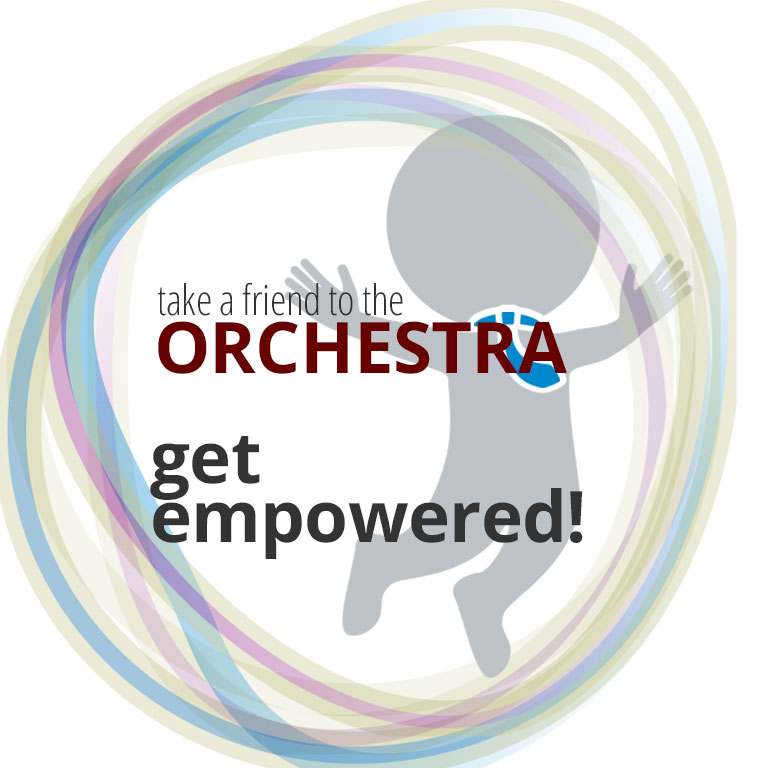May is officially Take a Friend to Orchestra month and our first contribution is from a man with a lifetime of experience working to bring classical music to communities across the country, Henry Fogel.
Henry is a passionate advocate for classical music and has served as an executive manager in some of the finest orchestras in the country such as the New York Philharmonic, National Symphony, and the Chicago Symphony. Currently, Henry is the President and CEO of the American Symphony Orchestra League, a position he’s held since 2003.
Henry is also rumored to have an extensive record collection.
This is Henry’s contribution to Take a Friend to Orchestra month; an insightful piece which goes to show that the best selling point for classical music is classical music.
In 1986, when I was executive director of the Chicago Symphony
Orchestra, a truck carrying CSO instruments from Arizona to Texas on a
tour turned over in Texas. I felt the need to supervise the delicate
moving of the instruments from the turned over truck to a new one and
we chartered a private plane to take us from Austin to the small town
of Junction, which was where the disabled truck was. The pilot of this
private plane was straight out of central casting for a Texas pilot
sixty-ish, silver-haired, tall, lean, and, in fact, was Lyndon
Johnson’s private pilot from the time Johnson left the White House
until his death. By the time I (and our stagehands) got in his plane,
the story of the truck had made national news, and so he knew about it
and began talking with us. He told me that he had never been to a
symphony concert, and thought it was probably too stuffy for him, and
besides, he said, he didn’t know enough about music to “understand” it.
I told him that if we were able to get our instruments together to play
our concert that night in Austin, I’d like him to be our guest. He
accepted, hesitantly and thus somewhere around the age of sixty had his
first experience of a symphony orchestra: Georg Solti, the CSO, and
Mahler’s Fifth Symphony! He came back at the end and was almost beside
himself with excitement and emotion he said he had no idea that music
could do what this concert did to him. He had always thought of
symphony concerts as stuffy and boring. And, this man became a
subscriber to the Austin Symphony discovering this art in his sixth
decade. I refuse to believe that by sheer coincidence, I happened to
find the one person in America who had been put off by the trappings
surrounding what we call “classical music,” and had kept away from it,
but once exposed found that he loved it.
What that incident teaches us is the impossibility of predicting who
will react to a specific program in a specific way. Most of us would
not have picked a 65-minute Mahler symphony as a logical introduction
for a sixty-year old’s first concert. What it also teaches us is the
importance of a personal introduction. A few orchestras are starting to
experiment with programs where they offer their current subscribers a
pair of free tickets for them to bring a friend to a concert,
requesting that it be a friend who has not attended in the past. The
thinking is that the enthusiasm of the subscriber, and the friendship
already in existence, will set the right conditions for the newbie.
I don’t think you can predict what is the right kind of concert for
someone who hasn’t been a regular attendee. One might love the wildness
and variety of a Mahler symphony, another might prefer an all Bach or
Mozart concert. Perhaps the best is a program with a wide variety of
music on it serving as a kind of “sampler” for the newbie. But I
believe the personal relationship between the regular patron and the
newbie is central. Even in the case of that pilot in Austin, although I
had never known him before, the relationship we established in the
small airplane, the fact that I could talk about sports with him (to
his surprise), preceded the invitation, and, I believe, established a
foundation that permitted him to give it a shot. I did talk to him
about the concert (Mozart’s “Haffner” Symphony was the first half) and
about the differences between Mozart and Mahler. That probably helped
but in the end, it is the music and the performance that will tell the
story.
– Henry Fogel


